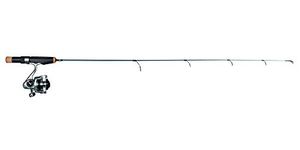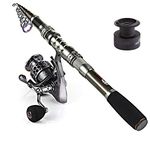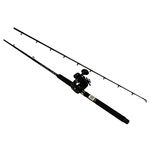10 bestFishing Rods And Reelsof December 2025
112M consumers helped this year.
1
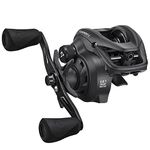
Piscifun Torrent II Baitcasting Fishing Reel, 20LB Carbon Fiber Drag Baitcasters, 6.6:1 Gear Ratio & Magnet Braking System Low Profile Casting Reel, Right Handed
Piscifun

10.0
2
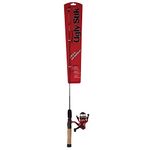
Dock Runner Spinning Combo 5.2:1 1
Ugly Stik

10.0
3
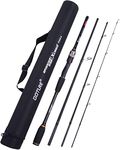
Goture 11 feet Travel Surf Casting Rod 4 Pieces, Carbon Fiber Fishing Rod Saltwater Freshwater, Telescoping Surf Fishing Rod, Ultralight Travel Fishing Rod for Bass, Carp, Trout, Salmon
Goture

9.9
4
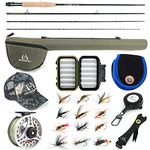
Maxcatch Extreme Fly Fishing Combo Kit 3/5/6/8 Weight, Starter Fly Rod and Reel Outfit, with a Protective Travel Case(5wt Rod Combo)
M MAXIMUMCATCH

9.8
5
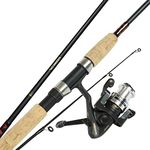
Okuma VS-605-20 Voyager Spinning Travel Kit
Okuma

9.6
OtherUp to 20% off
6
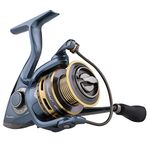
Pflueger PRESSP30X President Spinning Fishing Reel
Pflueger

9.5
7

St. Croix Rods X-Trek Spinning Fishing Systems, CTCS70MF2-C
St. Croix Rods

9.3
8

PLUSINNO Fishing Rod and Reel Combos Carbon Fiber Telescopic Fishing Rod with Reel Combo Sea Saltwater Freshwater Kit Fishing Rod Kit
PLUSINNO

9.0
9

Pflueger President/Fenwick Combo, 7 BGR, ML PRESP20-ELT27ML Multicolor One Size
Pflueger

8.8
10
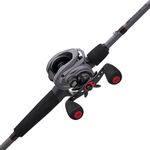
Zata Baitcast Combo- LP- 7' 1pc Medium Heavy- 11
Abu Garcia

8.6
A Guide to Selecting the Best Fishing Rods And Reels
Choosing the right fishing rod and reel can make your fishing experience much more enjoyable and successful. The best fit depends on where you plan to fish, what kind of fish you want to catch, and your own comfort and skill level. Understanding the main features and how they relate to your needs will help you make a smart choice and avoid frustration on the water.
Rod Length
Rod length refers to how long the fishing rod is from end to end. This is important because longer rods can cast farther and are better for open water, while shorter rods offer more control and are easier to use in tight spaces like small streams or when fishing from a boat. Rods typically range from about 5 to 12 feet. If you’re fishing in wide, open areas or need to cast long distances, a longer rod (7-12 feet) is helpful. For beginners or those fishing in smaller areas, a shorter rod (5-7 feet) is easier to handle.
Rod Power
Rod power describes how much force it takes to bend the rod. This matters because it affects what size fish you can catch and what kind of lures or bait you can use. Power is usually labeled as ultra-light, light, medium, medium-heavy, or heavy. Ultra-light and light rods are best for small fish and light lures, while medium to heavy rods are better for bigger fish and heavier lures. Think about the size of fish you want to catch—smaller fish need less power, bigger fish need more.
Rod Action
Rod action is about where the rod bends when you put pressure on it. Fast action rods bend mostly at the tip, making them sensitive and good for quick hook sets. Slow action rods bend more throughout the length, which is better for casting lighter lures and fighting fish gently. Medium action is a balance between the two. If you want sensitivity and quick response, go for fast action. If you want more flexibility and smoother casting, slow or medium action might suit you better.
Reel Type
The reel is the part that holds and releases the fishing line. The main types are spinning, baitcasting, and spincast. Spinning reels are easy to use and good for beginners, while baitcasting reels offer more control and power for experienced anglers. Spincast reels are the simplest and are often used by kids or those new to fishing. Choose a reel type that matches your skill level and the kind of fishing you plan to do.
Line Capacity
Line capacity tells you how much fishing line the reel can hold, usually listed in yards or meters and the strength of the line (pound-test). This is important because bigger fish and deeper water require more line. If you’re fishing in shallow water for small fish, you don’t need much capacity. For larger fish or deep-water fishing, look for a reel that can hold more and stronger line.
Material
Fishing rods and reels are made from different materials like graphite, fiberglass, or composites. Graphite rods are light and sensitive, making them good for feeling bites, but they can be more fragile. Fiberglass rods are tougher and more flexible, which is great for beginners or rough conditions. Composites offer a mix of both. Pick a material based on how much sensitivity, strength, and durability you need for your fishing style.
Handle Type
The handle is where you grip the rod, and it can be made from cork, foam, or other materials. Cork handles are comfortable and sensitive, while foam handles are durable and easy to clean. The length and shape of the handle also matter—longer handles are better for two-handed casting and fighting big fish, while shorter handles are easier for one-handed use and lighter setups. Choose a handle that feels comfortable in your hand and matches your fishing technique.
Best Reviews Guide Newsletter
Get exclusive articles, recommendations, shopping tips, and sales alerts
Sign up for our newsletter to receive weekly recommendations about seasonal and trendy products
Thank you for subscribing!
By submitting your email address you agree to our Terms and Conditions and Privacy Policy
